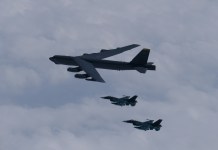Banking on the success of its drones in the Russia-Ukraine war, Iran now claims the demand for its Unmanned Aerial Vehicles (UAVs) has grown in the Western world significantly and that it would consider a sale if there are favorable strategic, diplomatic, commercial, and industrial reciprocity from these nations.
Islamic Republic of Iran’s (IRI) Defense Ministry spokesperson Brigadier General Reza Talaei-Nik told the Tasnim news agency that “there is a profusion of potential customers for the Iranian-manufactured military drones” which Iran is ready to export after “taking into account their production capacity and domestic needs.” The Press TV reported this.
The UAVs will be sold “provided political and security considerations do not apply to any customer and the country ensures that its drones will not be intended for inappropriate use.” Talaei-Nik did not name the Western and European countries.
Is the Claim True Or False?
The stunning claim might sound unbelievable. But with no subsequent retraction of the story by IRI, it seems like a deliberate remark, and there may be some truth in the statement.
Iran remains one of the most heavily sanctioned countries in the world. United Nations (UN), US, and European Union (EU) sanctions impose restrictions on foreign trade with Iran (except oil purchases), accessing international finance markets, being disconnected from the Society for Worldwide Interbank Financial Telecommunication (SWIFT) and selling aerospace components and parts to Iranian companies.
JCPOA Sanctions Expiring – Leverage To Get Back Into The Deal?
The statement indicates either an exception exists or a waiver has either been issued or would be sought by the “Western countries” from the relevant bodies or the US. One possible explanation behind the statement could be the upcoming expiry of the sanctions as a part of the Joint Comprehensive Plan of Action (JCPOA or Iran Nuclear Deal) in October 2023.
A rival — surviving as a functioning economy despite crippling sanctions and successfully developing kamikaze drones that marked the most significant war in Europe since World War 2 after being used by the second most extensive military power (Russia) — has been embarrassment enough for the US.
European nations have also long secretly disagreed with both the former Trump administration for pulling out of the JCPOA and the current President Joe Biden for continuing his predecessor’s “maximum pressure” policy on Iran.
The prospect of its European allies now considering Iran’s drones, even for their civilian sector, puts the US in a diplomatically weak spot. Therefore, the Iranian military’s claim can also be seen as a signal to Washington by painting such a scenario as leverage to revive JCPOA negotiations. The White House has nearly stalled the talks, effectively seen as dead by many observers.
The above, however, are merely informed guesses as many details remain unclear. US officials from the National Security Council (NSC), the Department of Commerce, and the White House can be expected to comment on the issue in the forthcoming days.
The Resistance Economy & Tech Powerhouse Despite Sanctions
The Persian country stunned the world when its Shahed-136-derived drones began striking Ukrainian civilian-military targets in Kyiv, its energy infrastructure, and depleting its Soviet Western-made air defense system in late 2022. Iran had come under fire for arming Russia when it later clarified that the drones were sold to Moscow a few months before the war in late 2021.
Analysts also later concluded that Russia was using its modified version of the Shahed drones, rechristened as Gernanium-2 (or Geran-2). Academics and engineers with the Conflict Armament Research (CAR) and reports in the Washington Post (WaPo) recently observed differences in the internal electronic and electrical circuitry and design features between the Iranian Shaheds and the Russian Gerans.

They also noted how a Russian factory set up exclusively for manufacturing the Gerans since mid-2021 has faced techno-industrial and commercial hurdles in reverse engineering Iranian technology and accessing the particular know-how.
This was owing to unaddressed administrative hindrances of the nascent defense technology cooperation between the two countries. A EurAsian Times analysis noted how this effectively served as evidence that exonerated Iran from the accusations of arming Russia, and the Iranian official’s claim comes in the backdrop of these explosive revelations in CAR and NYT.
The reports will have been read in Western, mainly European capitals, who might be more interested in learning how Western components have managed to find their way into Tehran’s military UAVs, which various news publications have reported since last year.
Iran Has An Impressive Range Of Drones & Missiles
Indeed, this does not undermine Iran’s indigenous defense technological progress, whose staggering success over the last two decades remains impressive despite being under devastating technical sanctions. Iranian commentators often say their country has astounding latent technological capability that can rival Western standards if sanctions are lifted.
After China, Iran has the most diverse range of light and heavy tactical drones and surface-to-surface ballistic missiles (SSM) that have successfully dithered both the US and Israel. The Press TV reported Major General Gholam-Ali Rashid’s comments in September 2022, when he boasted the IRI “undoubtedly (being) among the world’s top three drone powers.”
Its Fattah, Khorramshahr-4 ballistic missiles, and the claimed S-400 equivalent, the Bavar-373, are examples in this regard. Iran claims the Fattah to be a hypersonic ballistic missile that can reach speeds of Mach 15, which experts are not impressed at, pointing to how many regular ballistic missiles cross Mach 6 and sometimes even Mach 10 while re-entering the earth’s atmosphere.
However, they note that the Maneuverable Reentry Vehicle (MaRV) – guided by a thrust vectoring motor – in its terminal phase accords tremendous tactical benefits and dramatically reduces the chances of interception.
Interestingly, Talaei-Nik commented a few days after Iran unveiled its Mohajer-10 unmanned combat aerial vehicle (UCAV). The drone was photographed with a loadout of six air-to-ground missiles (AGM), retractable landing gears, and a chin-mounted electro-optical turret.
- The author can be reached at satamp@gmail.com
- Follow EurAsian Times on Google News




